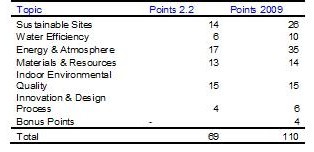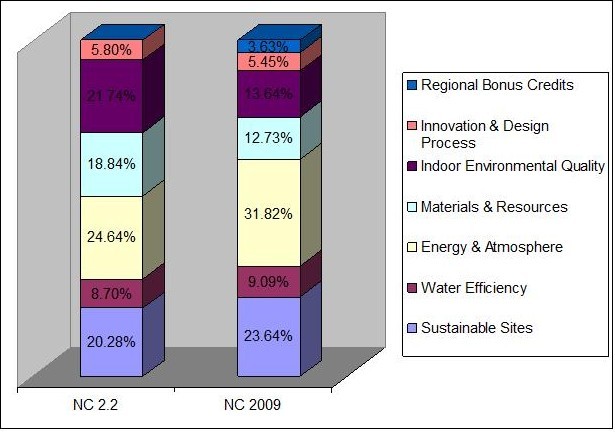We have previously discussed the New York Times article criticizing the Leadership in Energy and Environmental Design (LEED) rating systems developed by the U.S. Green Building Council (USGBC) for its arguable lack of translation to improved energy efficiency. We also discussed energy codes and their interplay with LEED and ongoing reporting. More recently, similar concerns were raised with respect to performance of LEED certified buildings at Dartmouth College (hat tip to Rich Cartlidge who wrote a nice piece on this topic with an ensuing series of good comments). Stephen Del Percio of Green Real Estate Law Journal has similarly analyzed the 2007 reports from the University of Massachusetts that found various LEED certified buildings used significantly more energy than anticipated under applicable modeling used for the LEED certification process.
In the midst of all this discussion of failed energy performance of LEED buildings, it makes sense to take statistical note of the changes from LEED 2.2 for New Construction to LEED 3.0 for New Construction. These changes appear to reflect an awareness and understanding that energy efficiency is critical to not only measuring the true sustainability of a LEED certified project, but also is key to USGBC and LEED maintaining credibility. A simple numerical comparison of LEED 2.2 and LEED 3.0 reveals a change in focus:

The relative redistribution of credits has resulted in a greater number of points allocated towards carbon footprint, efficient water and energy usage and the provision of alternative transportation options for workforces. A greater importance is placed on sustainable sites, water efficiency and energy and atmosphere. A greater number of points are now focused on sustainable sites credit two, development density and community connectivity and credit four, alternative transportation. While the methodology for compliance with these credits remains largely the same, the increased number of points available for them is evidence of growing relative importance.
For water efficiency, a new prerequisite requires each LEED project to reduce water use by at least 20 percent. Under LEED NC 2.2, a 20 percent reduction would have earned a credit point. The threshold for attaining credit three, water use reduction, has increased by 10 percent compared to the previous version.
In energy and atmosphere, the points allocated to credit one, optimize energy performance, expanded from a maximum of 10 points to a maximum of 19 points. Similarly, the available points available for the remaining credits have been increased. The relative percentage weighted similarly demonstrates a shift in focus to increase the emphasis on energy efficiency:

It is clear from the above, plus the previously reported requirements for energy reporting as part of minimum project requirements, that the USGBC was already moving towards an increased focus on the need for energy efficiency improvements as part of LEED. It remains to be seen whether these efforts will succeed or whether LEED has suffered on-going credibility damage as its certification plan comes under the spotlight of scientific and journalistic scrutiny.
As a LEED AP and human being, I am all in favor of a relevant and successful program that makes a difference. As a construction litigator and business attorney, I am concerned that the LEED structure will start (or has started) to suffer from the natural human temptation towards self-perpetuation and amalgamation of resources, influence and power. In both capacities and finally as a blogger, I am not sure it is entirely fair to pile on LEED on the energy question in particular given the statistical demonstration that USGBC is trying to shift increased focus towards energy efficiency and energy reporting. It seems to me the discussion should be about how to improve energy efficiency and energy modeling accuracy rather than trying to discredit LEED.
Editorial Note: This article is adapted in part from a recent article titled “Shades of Green”. This article was co-authored by me and Ela Kapusta, LEED AP. This article is made available as a reprinting from Commonwealth Contractor, September 2009, a publication of the Associated Builders and Contractors – Virginia Chapter (all rights reserved).
